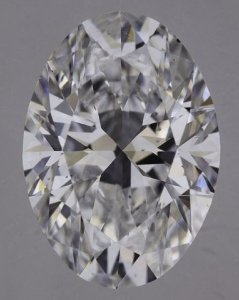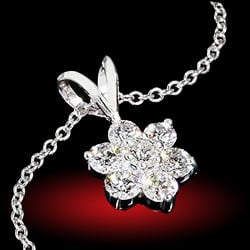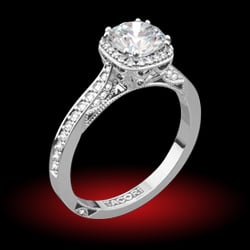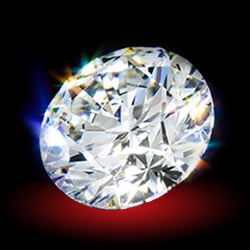johnwinters
Rough_Rock
- Joined
- Nov 16, 2015
- Messages
- 4
Hi all,
This is my first time to this forum and it seems like a really good source of information - thank you in advance for any guidance! Here is my situation: I have been researching stones for months, and recently purchased a diamond from Blue Nile, with the intention of taking it in to jewelers to get their opinions on it and compare it to their stones, before finalizing the decision (I have 30 days to return it to Blue Nile for a full refund).
Here is what I have in hand: 1.85 ct, D color, VS2, medium blue fluorescence. I included a photo below under magnification - here is the link to the stone on Blue Nile: http://www.bluenile.com/diamond-details/LD06141143.. Overall, I think the stone is beautiful, is proportioned the way I want, and I am leaning towards keeping it after having 'shopped it around.' I have 3 specific questions for this community:
1. As you can see on the GIA report, there are a number of inclusions. None of these are visible at all to the naked eye, and I can't spot any of them. However, any jeweler I bring it to immediately discounts it, because they can see the inclusions under magnifications...but they are obviously trying to sell me their own stones. My general philosophy has been to not pay extra for a level of flawlessness that I can't see, and that my girlfriend won't care about - but I want to get the opinions of people here. Should I care about these inclusions even though I can't see them? Some jewelers have said that they won't sell any stone that has a cavity, which feels extreme to me...but maybe I should think about that? How would you think about the flaws on this particular stone?
2. This stone has a medium blue fluorescence. I can barely tell - I notice a bit of a bluish tint if under direct sunlight, but it doesn't bother me at all. My research has told me that at most, the ring may appear slightly blue in a club under a black light. Is there any other reason to be wary of medium blue fluorescence on a D color stone?
3. Lastly, the bowtie. As I understand it, every oval will have some degree of a bowtie or another, it's just a matter of minimizing it. On this stone, I can't see any bowtie unless it's under direct sunlight - in that case, I see some darkening across the middle, and at the tips. But, I have seen the same exact effect on every oval diamond I have seen at jewelers in my area. So my question is - does this bowtie effect inevitably show up on any oval diamond, or is just that I haven't found that special oval that doesn't have any bowtie effect, even when viewed under direct light? After all the ones I've seen, I'm thinking that it's just something I'll have to live with in certain lights if I choose an oval (which I know my girlfriend wants), but I would love any input.
Many thanks in advance for any guidance!

This is my first time to this forum and it seems like a really good source of information - thank you in advance for any guidance! Here is my situation: I have been researching stones for months, and recently purchased a diamond from Blue Nile, with the intention of taking it in to jewelers to get their opinions on it and compare it to their stones, before finalizing the decision (I have 30 days to return it to Blue Nile for a full refund).
Here is what I have in hand: 1.85 ct, D color, VS2, medium blue fluorescence. I included a photo below under magnification - here is the link to the stone on Blue Nile: http://www.bluenile.com/diamond-details/LD06141143.. Overall, I think the stone is beautiful, is proportioned the way I want, and I am leaning towards keeping it after having 'shopped it around.' I have 3 specific questions for this community:
1. As you can see on the GIA report, there are a number of inclusions. None of these are visible at all to the naked eye, and I can't spot any of them. However, any jeweler I bring it to immediately discounts it, because they can see the inclusions under magnifications...but they are obviously trying to sell me their own stones. My general philosophy has been to not pay extra for a level of flawlessness that I can't see, and that my girlfriend won't care about - but I want to get the opinions of people here. Should I care about these inclusions even though I can't see them? Some jewelers have said that they won't sell any stone that has a cavity, which feels extreme to me...but maybe I should think about that? How would you think about the flaws on this particular stone?
2. This stone has a medium blue fluorescence. I can barely tell - I notice a bit of a bluish tint if under direct sunlight, but it doesn't bother me at all. My research has told me that at most, the ring may appear slightly blue in a club under a black light. Is there any other reason to be wary of medium blue fluorescence on a D color stone?
3. Lastly, the bowtie. As I understand it, every oval will have some degree of a bowtie or another, it's just a matter of minimizing it. On this stone, I can't see any bowtie unless it's under direct sunlight - in that case, I see some darkening across the middle, and at the tips. But, I have seen the same exact effect on every oval diamond I have seen at jewelers in my area. So my question is - does this bowtie effect inevitably show up on any oval diamond, or is just that I haven't found that special oval that doesn't have any bowtie effect, even when viewed under direct light? After all the ones I've seen, I'm thinking that it's just something I'll have to live with in certain lights if I choose an oval (which I know my girlfriend wants), but I would love any input.
Many thanks in advance for any guidance!








300x240.png)